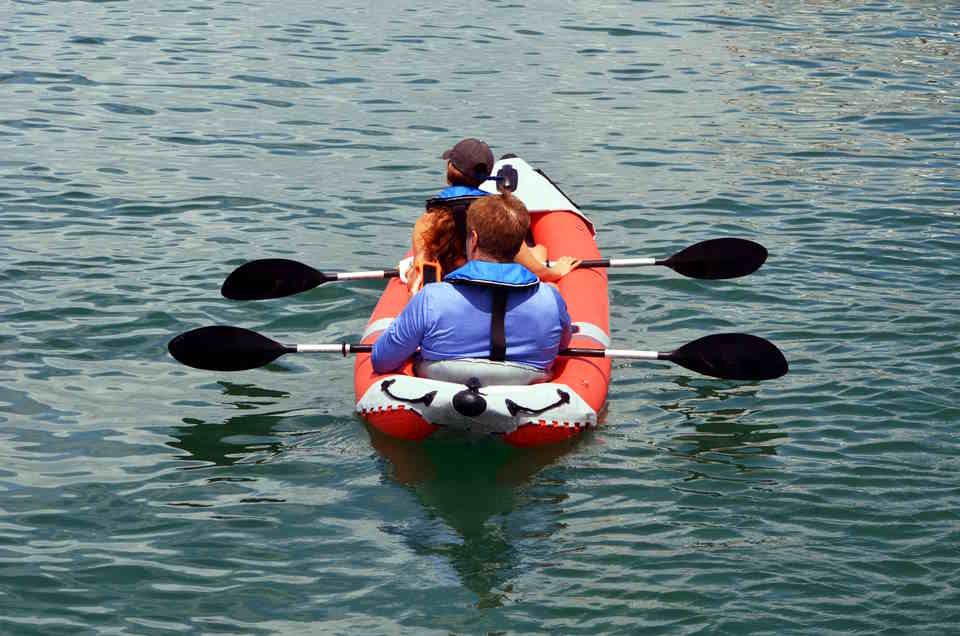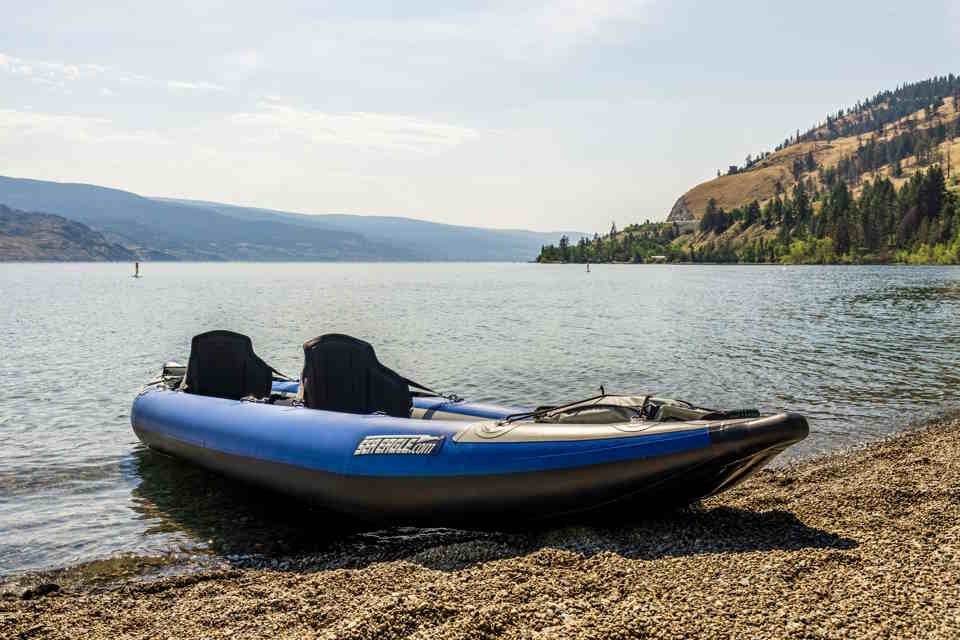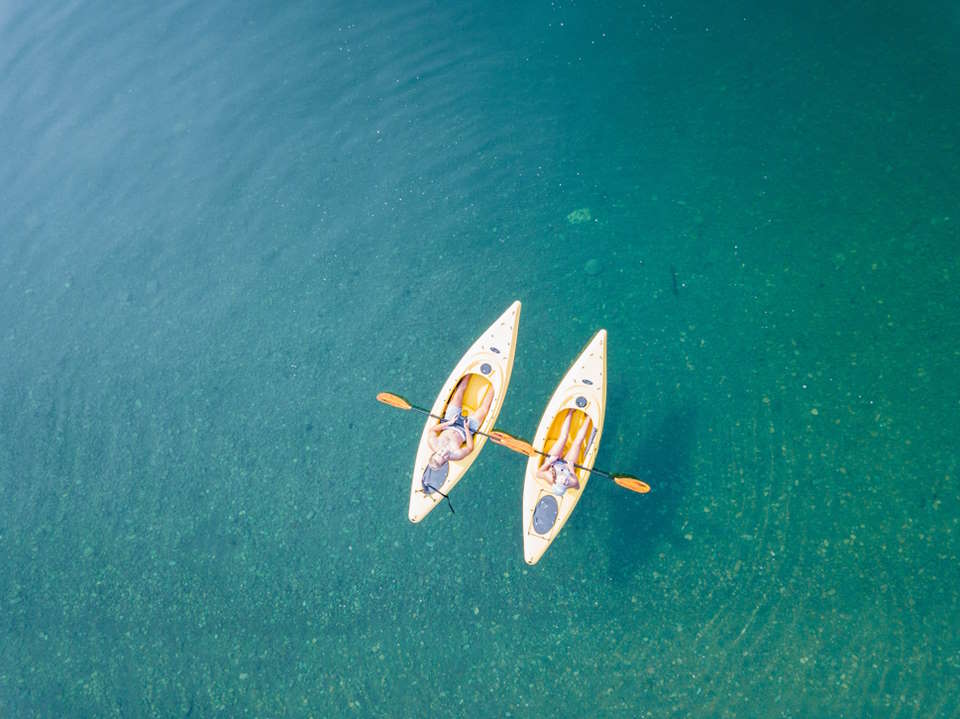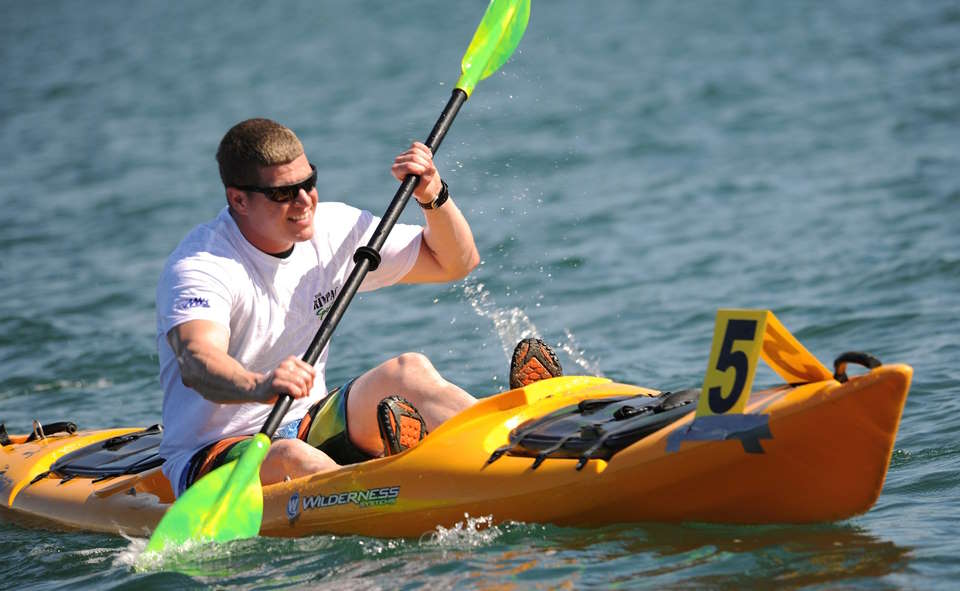Welcome to the place dedicated to helping beginner kayakers understand what they should bring and wear when heading out for a kayaking adventure. Whether you are just starting your kayaking journey or looking for tips to enhance your experience, we have got you covered. Kayaking is not only a thrilling water sport but also an opportunity to connect with nature and find serenity on the water. To make the most of your time on the kayak, it is essential to come prepared with the right gear. In this blog post, we will explore what items you should bring on your kayak, what attire is suitable for beginners, whether you should wear shoes, and what clothes you should avoid. So, let’s dive in and get ready for an unforgettable kayaking experience!
Introduction
When preparing for a kayaking adventure, it’s essential to know what to bring to ensure a safe and enjoyable experience. Packing the right gear and essentials can make a significant difference in your comfort and safety on the water. Whether you are a seasoned paddler or a beginner, having the right equipment and supplies is crucial. We will discuss the essential items you should carry on your kayak to make the most out of your kayak trip.
1. Personal Floatation Device (PFD): The first and most important item to bring when kayaking is a personal floatation device. Also known as a life jacket, a PFD will keep you afloat in case of an accidental capsize or any other emergency situation. Make sure to choose a PFD that fits you well and is approved by the appropriate safety standards.
2. Paddle: It goes without saying that a kayak paddle is an absolute necessity. Opt for a paddle that is the right size and weight for your personal preference and kayaking style. It’s essential to have a spare paddle as well, in case yours gets lost or damaged during your trip.
3. Safety Equipment: Safety should always be a top priority when kayaking. Therefore, bringing essential safety equipment is imperative. This includes a whistle or signaling device to attract attention if needed, a flashlight or headlamp for low-light conditions, and a rescue knife in case of entanglement or other emergencies.
4. Navigation Tools:
Having the ability to navigate is crucial, especially if you are exploring unfamiliar waters. Consider bringing a waterproof map or a marine GPS device to help you stay on track and find your way back. A compass can also be helpful for basic navigation purposes.
5. Dry Bags or Waterproof Containers:
To protect your valuables and belongings from getting wet, it’s recommended to bring waterproof dry bags or containers. These will keep your essentials, such as cell phones, keys, extra clothing, and snacks, dry and secure throughout your kayaking trip.
| 6. First Aid Kit: | 7. Sun Protection: |
|---|---|
| A small first aid kit is essential to treat any minor injuries or ailments that may occur during your kayaking adventure. Include items such as bandages, antiseptic ointment, pain relievers, and any personal medications you might need. | Being exposed to the sun for extended periods of time can be harmful to your skin and overall health. Make sure to wear sunscreen with a high SPF, a hat to protect your face, and sunglasses for eye protection. Additionally, lightweight and breathable clothing can help shield you from the sun while keeping you cool. |
8. Water and Snacks: Staying hydrated and fueled during your kayaking trip is crucial for your well-being and energy levels. Bring an adequate amount of water in a reusable bottle or hydration pack, along with easy-to-eat snacks or energy bars to keep you nourished throughout the journey.
9. Weather-Appropriate Clothing: Dressing appropriately for the weather conditions is essential for your comfort and safety. Wear quick-drying clothing that provides protection against the sun and has moisture-wicking properties. Avoid cotton attire as it tends to stay wet and can make you feel cold and uncomfortable.
10. Kayak Accessories: Lastly, don’t forget the necessary kayak accessories that enhance your overall experience. This may include a spray skirt to keep water out of the cockpit, a bilge pump for removing excess water, and a drysuit or wetsuit for colder temperatures.
By having these essential items when kayaking, you’ll be well-prepared for any situation that may arise during your adventure on the water. Remember to always prioritize safety, check the weather forecast beforehand, and let someone know about your kayaking plans.
What Should You Carry On Your Kayak?
When it comes to kayaking, it’s important to be prepared and have the right gear with you. Whether you’re going on a short day trip or a longer adventure, there are certain items you should always carry on your kayak. These items will ensure your safety, make your trip more enjoyable, and help you handle any unexpected situations or emergencies that may arise.
The essentials:
- A life jacket or personal flotation device (PFD) is a must-have for every kayaker. It’s crucial for your safety, especially in case of capsizing or accidents. Choose a well-fitting, comfortable, and Coast Guard-approved PFD.
- A paddle is another obvious necessity. Make sure you have a paddle that is suitable for your height and the type of kayaking you plan to do.
- A whistle or other sound-producing device is essential for signaling your presence to other boaters, especially in low visibility or emergency situations. It’s a simple but effective tool for communication.
Additional items to consider:
- A bilge pump or sponge is handy for removing any water that may get into your kayak. This is especially important for sit-inside kayaks.
- A dry bag or waterproof case is essential for keeping your belongings dry, such as your phone, keys, wallet, and any other items you don’t want to get wet.
- A first aid kit should always be a part of your kayaking gear. It should include basic supplies such as band-aids, disinfectant, pain relievers, and any necessary medications.
Other recommended items:
| Item | Description |
|---|---|
| Sunscreen | Protect your skin from harmful UV rays. |
| Sunglasses | Keep your eyes protected from the sun’s glare and potential water splashes. |
| Hat | A hat can provide shade and protect your head from sunburn. |
| Snacks and water | Stay hydrated and energized during your kayaking trip. |
Now you’re ready to hit the water!
By ensuring you have the essential items and considering the additional recommended gear, you’ll be well-prepared for a safe and enjoyable kayaking experience. Always check local regulations and weather conditions before heading out, and don’t forget to have fun!
What Should a Beginner Wear When Kayaking?
When embarking on a kayaking adventure, it is important for beginners to be prepared and properly equipped. Knowing what to wear while kayaking can greatly enhance your overall experience and ensure your safety and comfort on the water. We will guide you through the essential clothing and gear that beginners should wear when kayaking.
1. Comfortable swimwear or quick-dry clothing: As a beginner, it is best to wear comfortable swimwear or quick-dry clothing that allows for ease of movement. Avoid cotton materials as they tend to stay wet, making you feel uncomfortable throughout your kayaking trip. Opt for synthetic materials like polyester or nylon that dry quickly and provide better insulation.
2. Protective footwear: While kayaking, it is essential to wear appropriate footwear to ensure good grip and protection. Water shoes or neoprene booties are highly recommended as they provide traction on slippery surfaces and protect your feet from sharp objects or rocks in the water. Avoid wearing flip-flops or open-toed sandals as they can easily get lost or injured.
3. Sun-protective clothing and accessories: Spending hours on the water exposes you to the sun’s harmful rays. To protect your skin from sunburn and reduce the risk of heat-related illnesses, it is crucial to wear sun-protective clothing. Look for clothing with UPF (Ultraviolet Protection Factor) rating that shields you from UV rays. Additionally, wear a wide-brimmed hat, sunglasses with UV protection, and apply sunscreen on exposed skin areas.
4. Personal flotation device (PFD): A PFD is a mandatory piece of safety equipment for all kayakers, especially beginners. Ensure you wear a properly fitted PFD at all times while on the water, as it can potentially save your life in case of an accident or capsize.
5. Layered clothing: Depending on the weather conditions, it is advisable to dress in layers to regulate your body temperature. Start with a moisture-wicking base layer to keep sweat away from your skin, add a lightweight insulating layer for warmth, and top it off with a waterproof or windproof outer layer to protect against the elements.
6. Waterproof accessories: To protect your belongings from getting wet, consider using dry bags or waterproof cases for items such as your phone, keys, wallet, and extra clothing. Additionally, bring a waterproof watch or wristband to keep track of time while on the water.
7. Gloves: Wearing gloves can provide extra protection and grip when paddling, especially during long kayaking trips. Look for gloves specifically designed for water activities, as they offer better dexterity and grip when wet.
8. Insect repellent: Depending on the location and time of year, insects such as mosquitoes and flies can be a nuisance. Apply insect repellent on exposed skin areas to ward off these pesky creatures and enjoy a more pleasant kayaking experience.
By wearing the right clothing and gear as a beginner, you can fully enjoy your kayaking adventure while staying safe and comfortable. Remember to always be prepared and consider the weather conditions before heading out. Happy kayaking!
Do You Wear Shoes for Kayaking?
Kayaking is a popular water sport that offers a thrilling experience while exploring the great outdoors. Whether you are a beginner or an experienced kayaker, one question that often arises is whether to wear shoes while kayaking. The answer to this question may vary depending on individual preferences and the type of kayaking you plan to engage in.
There are different opinions regarding the use of shoes while kayaking. Some kayakers prefer to go barefoot, while others opt for specialized water shoes or sandals. Ultimately, the decision boils down to personal comfort and safety.
If you choose to wear shoes while kayaking, it is recommended to go for water-specific footwear. These shoes are designed to provide grip on wet surfaces, protect your feet from sharp objects, and offer good drainage. They are typically lightweight and provide adequate support and stability, essential for balancing in a kayak.
- Choose shoes with a good sole grip to prevent slipping on slippery surfaces.
- Ensure the shoes have proper drainage to allow water to flow out easily.
- Consider shoes with toe protection for added safety.
On the other hand, some kayakers prefer not to wear any shoes while kayaking. Going barefoot allows them to feel more connected to the kayak and experience the natural elements directly. However, it is important to note that going barefoot may expose your feet to potential hazards such as sharp rocks, debris, or even sunburns.
- If you choose to go barefoot, make sure the water conditions are safe and the area is free from any potential hazards.
- Apply sunscreen to protect your feet from the sun’s harmful rays.
- Be cautious when navigating rocky or shallow areas.
In conclusion, whether or not you wear shoes while kayaking is a personal choice. It is essential to prioritize comfort, safety, and the specific conditions of your kayaking adventure. Consider investing in water-specific footwear if you prefer added protection and support. However, if you enjoy the sensation of going barefoot and the conditions allow for it, then feel free to paddle away without shoes.
| Pros of Wearing Shoes: | Cons of Wearing Shoes: |
|---|---|
| Enhanced grip | May feel less connected to the kayak |
| Protection from sharp objects | Potential for trapped water inside shoes |
| Added stability and support | Extra cost for water-specific footwear |
What Should You Not Wear While Kayaking?
When it comes to kayaking, choosing the right attire is essential for a comfortable and safe experience on the water. While there are plenty of guides available on what to wear while kayaking, it’s also important to be aware of what you should not wear. Wearing the wrong clothing can not only hinder your performance but also put you at risk of accidents and discomfort. We will discuss the things you should avoid wearing when kayaking, ensuring that you are well-prepared for your next adventure.
1. Cotton clothing:
Although cotton is a popular fabric for everyday wear, it is not suitable for kayaking. Cotton tends to absorb and retain water, which can make you feel cold and uncomfortable throughout your kayak trip. Wet clothing can also restrict your movement and increase the risk of hypothermia, particularly in colder weather or when splashed with water. Instead, opt for synthetic materials such as polyester or nylon that wick away moisture and dry quickly, keeping you warm and comfortable on the water.
2. Baggy or loose clothing:
While loose-fitting clothing may seem comfortable on land, it can become a hindrance when kayaking. Baggy clothes can get easily caught on the kayak’s seat or equipment, leading to potential accidents. Additionally, loose clothing can restrict your movement and make it difficult to maneuver the kayak effectively. It is advisable to wear form-fitting or semi-fitted clothing that allows you to move freely and ensures there are no loose ends that can get entangled.
3. Jewelry and accessories:
Although it may be tempting to accessorize for style, it is best to avoid wearing jewelry and accessories while kayaking. Items such as necklaces, bracelets, and rings can easily get caught on the kayak, paddle, or other equipment, causing injury or loss. Moreover, if you accidentally capsize or fall into the water, these accessories may become a liability and put you at risk of entanglement or sinking. It is always better to leave jewelry and accessories at home or in a secure place before getting on the water.
- Avoid wearing cotton clothing
- Avoid wearing baggy or loose clothing
- Avoid wearing jewelry and accessories
| Item | Reason |
|---|---|
| Cotton clothing | Retains water, leading to discomfort and increased risk of hypothermia |
| Baggy or loose clothing | Can get caught on kayak or equipment, hindering movement and risking accidents |
| Jewelry and accessories | Pose risk of entanglement, loss, or injury |











